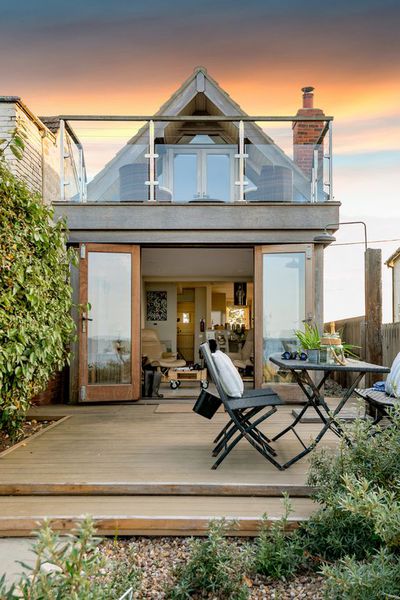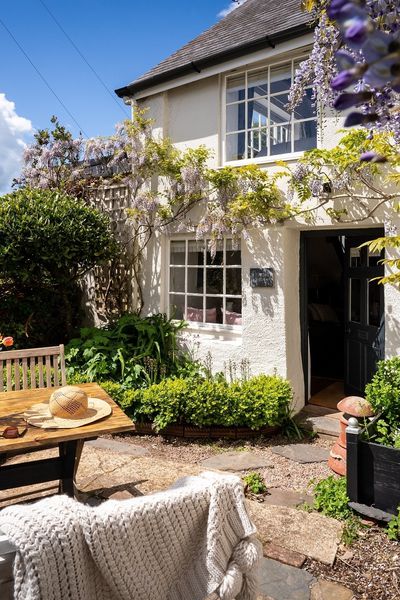
Northumberland’s pristine landscape is home to an incredible assortment of wildlife. Its rivers run clean, the roads are empty and a lack of light pollution means there are great swathes of star-studded night skies. With its jaw-dropping vistas, rich history and heritage, and huge variety of wildlife, you’ll soon fall under its spell. Our owners have shared their insider tips and we’ve rounded up some of the best places to get closer to wildlife on your Northumbrian holiday. Visit islands full of sprawling seals and swooping seabirds, marvel at wide open skies where merlins soar, and ramble through woodlands to spot the elusive red squirrel.
Kielder Reservoir Water and Forest Park
Kielder, the largest forest and the biggest man-made lake in Northern Europe, can be found at the tip of Northumberland, just as it bumps into the Scottish Borders. In all, it’s made up of 250 square miles of remote, wildlife-rich land that also happens to be the darkest place in England. This rich and diverse forest is home to red squirrels, otters, roe deer, bats, pine martens and a vast array of birds of prey, from goshawks to hen harriers and ospreys. It has a large heath area, mires and bogs with ferns and flowering plants that support butterflies and rare mosses. Visit the Kielder Observatory, powered by wind and solar, to watch shooting stars flare, satellites flash past and the moon glide serenely above. Hire bikes and cycle around the lake.
Hauxley Nature Reserve
Originally part of Radcliffe colliery, the land was bought by Northumberland Wildlife Trust in 1983 and transformed it into a thriving coastal wildlife haven. The sheer variety of bird species is exciting, up to 140 different ones are sighted each year. There’s a lot of activity in spring and autumn but visit anytime of the year and you might spot tree sparrow, reed bunting and bullfinch, coot, moorhen and curlew. It’s not just birds: red squirrels, stoats and otters are thriving here, butterflies and dragonflies too. In summer, wetland flowers like viper’s bugloss, bloody cranesbill and northern marsh orchid burst into life. There are trails to follow, activities to take part in, glorious views over Druridge Bay and a café for scones and tea. They have a team of passionate and committed volunteers who are the beating heart of the reserve, and even built the straw-bale eco visitor centre!


Allen Banks and Staward Gorge
Near Hexham, Allen Banks is a popular beauty spot, often thronged with visitors at the weekend, if you can visit during the week you’ll be rewarded by peaceful walks through ornamental and ancient woodland – many of the trees have been here since at least medieval times. With over 100 acres to roam, and a designated Site of Special Scientific Interest, you’ll find a huge variety of flora, fauna and fungi. Visit in spring for mesmerising carpets of bluebells and the potent waft of wild garlic. Walking along the tarn (originally a boating lake dug by the Victorians) you may spot dippers and grey wagtail, or even a red squirrel darting amongst the trees. Look out for the medieval pele tower, reconstructed Victorian summerhouse and the ornamental pond. Views stretch out over the Tyne Valley and towards Hadrian’s Wall in the distance.
Farne Islands
A couple of miles off the Northumberland coast, The Farne Islands can only be reached by boat from quaint Seahouses. Home to 23 species of seabirds and a sprawling colony of seals, it is an internationally-recognised and important breeding area. In 1951, the islands became one of the first designated Sites of Special Scientific Interest and were declared a national nature reserve in 1993. The islands are home to 100,000 pairs of nesting seabirds, including three species of tern, eiders, shags, puffins, razorbills, gulls and guillemots. The puffins are the stars of the show, glimpse a flash of orange beak stuffed with herrings, diving in and out of the North Sea to feed their pufflings – yes, that is the official term for a baby puffin! Due to concerns regarding Avian Flu, boats aren’t currently able to dock, as NT rangers work to protect the wildlife and their habitat. If you’re lucky you may spot dolphins or even a minke whale on your trip.


The North Pennines
The North Pennines is not only a designated AONB, it also holds the title of the UK’s first UNESCO European and Global Geopark. Simply put, it’s a very special place indeed, and a dedicated team work to conserve and enhance the natural beauty of the area for future generations. Challenge yourself to a long-distance hike over the open heather moors and down verdant dales, or take a gentle ramble past burbling upland rivers and through ancient woodland. Home to an incredible variety of wildlife, the hay meadows support breeding waders and bats, the moorlands welcome grouse, curlew, merlin, peregrine and owls. The streams, rivers and reservoirs host voles and otters, and the woods are teeming with birds and the occasional red squirrel.
Harthope Valley, The Cheviots
The Cheviots are a range of rolling hills, formed millions of years ago when lava cooled, straddling the Anglo-Scottish border between Northumberland and the Scottish Borders. Visit the dramatic waterfall of Linhope Spout as it tumbles into the plunge pool below, follow the Kirknewton Hillfort Trail to wonder at the 2,000 year old Iron Age hill fort, or hike The Cheviot, the highest peak at 815 metres. On a clear day you can see as far as the Lake District. Here, you might spot an adder on the track, or birds such as curlews, stonechats, meadow pipits, whinchats, skylarks, buzzards and possibly even merlins.
Featured places to stay in Northumberland
The Pheasant Inn
Hexham, Northumberland
The Hemmel
Morpeth, Northumberland
The Bothy
Hexham, Northumberland
Explore all of our places to stay in Northumberland >
Want more travel and lifestyle inspiration? Get our email updates direct to your inbox.
Sign up >Share this article:
You might also like
Pocket guide to Northumberland

Carmen McCormack
Guest Expert
8 min read
Our guide to stargazing this Winter

Carmen McCormack
Guest Expert
5 min read
Five must-visit castles in wild Northumberland

Carmen McCormack
Guest Expert
5 min read














